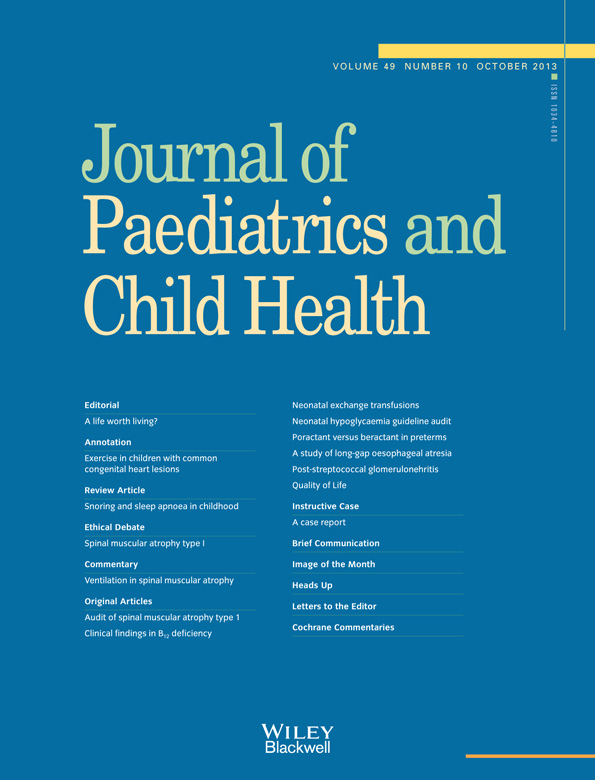Management of children with spinal muscular atrophy type 1 in Australia
Abstract
Aims
The study aims to: (i) estimate the prevalence of spinal muscular atrophy type 1 (SMA 1); (ii) describe what practices characterise end-of-life care of patients with SMA 1; and (iii) ascertain whether a consistent approach to the management of these patients exists in Australia.
Methods
An audit of the Australasian pathology laboratories offering the diagnostic SMN1 deletion test was conducted for patients diagnosed with SMA in Australia for 2010 and 2011. In addition, a retrospective clinical audit was conducted in eight major Australian paediatric hospitals of the end-of-life care provided to children with confirmed SMA 1 from 2005 to 2010.
Results
Thirty-five children were included in the clinical audit, accounting for an estimated 61% of children diagnosed with SMA 1 from 2005 to 2010. Twenty-six per cent were ventilated invasively, only two of whom were intubated after the diagnosis was confirmed. No children were ventilated long term (>90 days) or had a tracheostomy performed. Nasogastric tube feeding was a common measure to support adequate nutritional intake. Total parenteral nutrition, gastrostomy and fundoplication were not provided for any children. Conflict over end-of-life care decisions was documented in one instance, without the involvement of a guardianship tribunal.
Conclusion
There appears to be a consistent approach in the management of children with SMA 1 in Australia, which can be characterised as ‘actively managed dying’. This study could contribute to the development of Australian consensus guidelines for the management of these children. These results also highlight a number of ethical issues related to the management of children with SMA 1.




